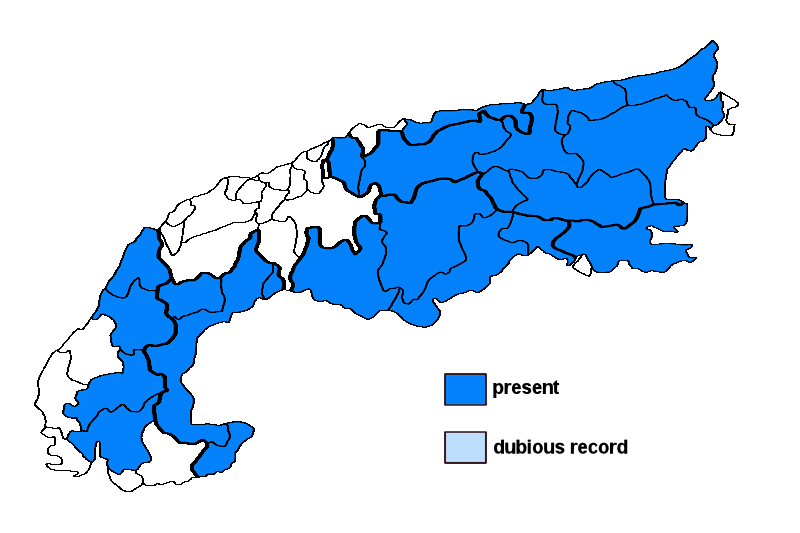Myriolecis zosterae (Ach.) Śliwa, Zhao Xin & Lumbsch subsp. palanderi (Vain.) ined. (provisionally placed here, ICN Art. 36.1b)
Syn.: Lecanora coerulescens (Baumg.) Arnold, Lecanora hagenii (Ach.) Ach. f. saxifragae Anzi, Lecanora hagenii (Ach.) Ach. var. fallax Hepp, Lecanora hagenii (Ach.) Ach. var. hagenii f. coerulescens (Baumg.) Hazsl., Myriolecis zosterae sensu Nimis, Myriolecis hagenii (Ach.) Śliwa, Zhao Xin & Lumbsch var. fallax (Hepp) Hafellner
Lichenised.
Substrate: plant debris, living mosses
Altitudinal range: from the subalpine belt (potential vegetation: open, taiga-like forests dominated by Larix decidua and/or Pinus cembra and Rhododendron) to the nival belt (above the lower limit of perennial snow and glaciers)
Note: a circumpolar, arctic-alpine lichen found on plant debris and mosses over calciferous substrata, from the Oromediterranean belt to the Arctic zone. This lichen does not belong to Myriospora hagenii, due to the larger apothecia which are restricted at the base, but fully corresponds to the description of Lecanora zosterae var. palanderi, a taxon which is quite different from the nominal variety (see Roux et coll. 2017); widespread and common throughout the Alps.
Austria: Vorarlberg; Tirol; Salzburg; Kärnten; Steiermark; Oberösterreich; Niederösterreich (incl. Wien); Germany: Oberbayern; France: Alpes-de-Haute-Provence; Haute-Alpes; Savoie; Haute-Savoie; Italy: Friuli; Veneto; Trentino Alto Adige; Lombardia; Piemonte; Valle d'Aosta; Liguria; Slovenia: Alpine and Pre-Alpine Slovenia;





